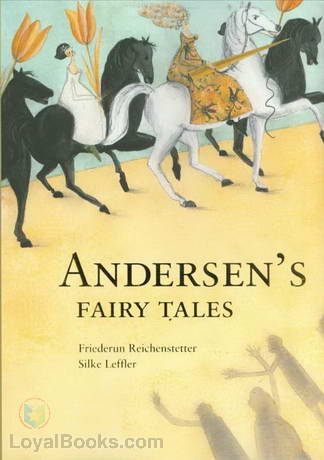

Two-thirds of the museum are underground and above it is a fairy-tale garden. Spread over 5,000 square meters, the brightly lit museum, which is built to merge into its surroundings, invites visitors to dive into Andersen's world. The museum was designed by the Japanese star architect Kengo Kuma and his team, which also created the new Olympic stadium in Tokyo.

Landscape, architecture and modern exhibition design are closely interwoven. The museum aims to present Andersen's life in a completely new way and to enable visitors to have a sensory experience of his world. Anderson House Image: Laerke Beck Johansen/H.C. Andersen Hus." Innovative exhibition at H.C. On June 30, 2021, a new kind of museum opened in his native Odense: The H.C. Andersen House, in Danish, the "H.C. Germany was where Andersen became famous even before people in his home country knew him - at least in his lifetime. When Andersen died at the age of 70 in Copenhagen, he was already an internationally-known author. Until a short time ago, the house where he was born was a place of pilgrimage for his fans. Andersen HouseĪndersen loved traveling and he traveled a lot, above all to Germany to visit his friends and patrons Friederike and Friedrich Anton Serre. The writer's birthplace in Odense Image: H.C.


Very few people know that Andersen also wrote poems, plays, novels and travelogues and was a very talented silhouette artist. But the storyteller, who was born into a very poor household in 1805, did not only write fairy tales. In a masterful way, he wove different materials and influences to create the fairytales that we know today. Fables, real incidents and natural phenomena also triggered his imagination. Hans Christian Andersen in 1860 Image: picture-alliance/Glasshouse ImagesĪndersen was inspired by traditional Scandinavian, German and Greek stories, from ancient times to the Middle Ages. Many of his stories were converted into plays, filmed or made into musicals, and even inspired popular animated pictures like Ariel. Andersen's fairy tales are part of world literature today. Altogether, he wrote around a 160 tales, which were published in eight volumes from 1835 to 1848 and have been translated into over 120 languages. The Little Match Girl, The Princess and the Pea, The Tin Soldier and The Little Mermaid: these are just some of the most famous fairy-tales by Hans Christian Andersen.


 0 kommentar(er)
0 kommentar(er)
